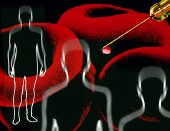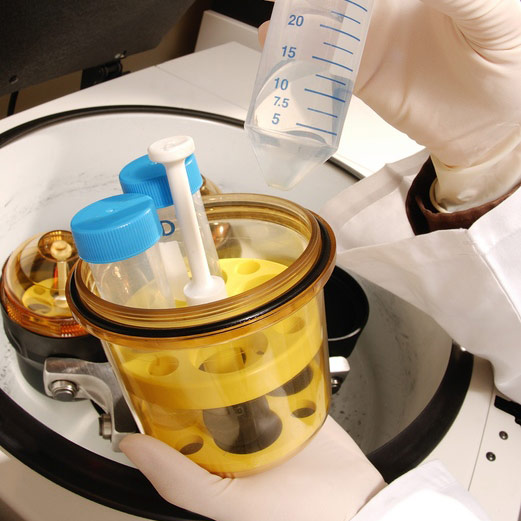
TUESDAY, Oct. 19 (HealthDay News) — A small group of people with chronic myeloid leukemia (CML) who decided to stop taking the cancer drug Gleevec (imatinib) have remained cancer-free two years later, French researchers report.
The study, published online Oct. 19 in The Lancet Oncology, is the first to raise the possibility that the drug might go beyond long-term cancer control and offer some patients a possible cure.
“We’ve never really told patients that we have a therapy that can provide a cure for this disease,” said one expert, Dr. John Cole, chairman of the department of hematology/oncology at the Ochsner Clinic Foundation in New Orleans. “We’ve simply never used the ‘cure’ word.”
Gleevec — a highly targeted member of a class of drugs called protein-tyrosine kinase inhibitors — was first approved by the U.S. Food and Drug Administration for use against CML in 2001. The medication works by thwarting the activity of an aberrant protein that helps drive the disease. Gleevec has proven to be a revolutionary advance against CML, a cancer of the white blood cells that previously had a very poor prognosis.
According to the researchers, studies suggest that the drug now offers CML patients an 89 percent chance of survival five years after treatment initiation, and an 85 percent survival rate after eight years.
Still, the drug does have one major downside: cost. Currently, the bill for Gleevec therapy can total about $4,500 per month.
The new study was led by Francois-Xavier Mahon, of the Hematology Lab and Blood Disease Service division of the Centre Hospitalier Universitaire de Bordeaux in France. To establish whether or not Gleevec could actually thwart CML in certain cases, Mahon and colleagues spent a year tracking 69 CML patients at 19 different medical facilities across France. “We are on the ‘path to cure’ of CML,” Mahon said.
All the patients had enrolled in the study between 2007 and 2009, were 18 years or older, had been taking Gleevec for a minimum of three years and had been in remission for a minimum of two years.
After all the participants discontinued Gleevec, the authors observed relapse among more than 60 percent of the patients — most of whom showed renewed signs of active disease after less than six months of treatment cessation.
However, after a full year without Gleevec approximately 40 percent of the patients remained in full remission, with no detectable signs of recurrent disease. And two years after stopping the drug, remission continued for 38 percent of the patients.
There was even good news for those patients whose cancer did return. These patients seemed to fare well once Gleevec treatment was reinstated, the authors said, suggesting that treatment interruption does not give rise to drug resistance or undue safety concerns.
Nonetheless, Mahon and his team cautioned that full disease remission remained the exception rather than the rule for patients. And they stressed that total discontinuation of Gleevec would probably be an option for only about 10 percent of CML patients.
That said, they concluded that Gleevec can be safely halted among CML patients who maintain remission for two years or more.
“This development — if it can hold up in larger studies — could prove to be very, very encouraging,” said Cole. “It might actually pave the way for other studies focused on situations where we have a shot now to completely eradicate some types of cancer with similar approaches. It won’t necessarily, as is the case here, affect all patients. But it will have a huge impact on an important subgroup of patients, helping them to get off a very expensive treatment without compromising their long-term well-being.”
For his part, Dr. Otis Brawley, chief medical officer for the American Cancer Society, said he would hesitate before calling this a cure, given the study’s small patient pool and short follow-up period.
“But what is very important here is that those people who were taken off Gleevec and relapsed and then were put back on the drug did respond to it again,” he noted. “So, for patients who might simply want a ‘holiday’ from Gleevec this says that that holiday is safe.”
“And that is important because this drug has huge side effects,” Brawley noted, in reference to the lower leg and eye swelling, muscle cramps, muscle pain, diarrhea, rashes, nausea and vomiting that can accompany its use. “And it’s very expensive. So being off-drug for a length of time is a good thing in and of itself, even if it doesn’t turn out to be a permanent cure.”
More information
For more on chronic myeloid leukemia, visit the American Cancer Society.

